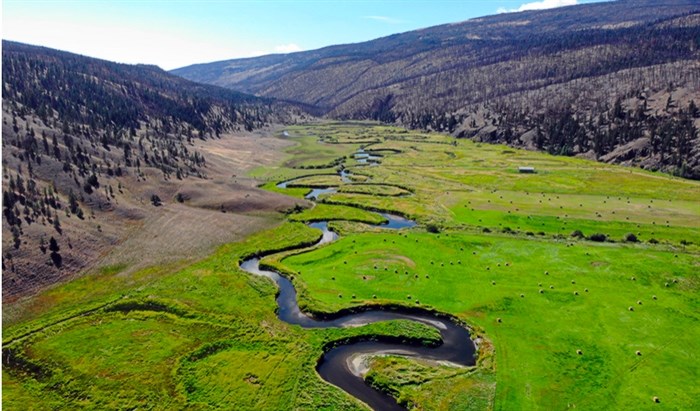
The Bonaparte River after the 2017 Elephant Hill wildfire is seen in this submitted aerial photo.
Image Credit: SUBMITTED/UBCO/Dr. Alessandro Ielpi
September 30, 2023 - 4:30 PM
While hundreds of people burnt out by the McDougall Creek wildfire in and around West Kelowna last month are still struggling to get their lives back together, for most others it’s already a rapidly fading memory.
The impact of such massive fires will continue to haunt the countryside for many years to come.
“It generally isn’t until two or three years later that you really start to see what’s happening,” Dr. Alessandro Ielpi, an assistant professor in geomorphology at UBC Okanagan, said in a news release.
Ielpi studied the impact of the 2017 Elephant Hill wildfire on the Bonaparte River near Cache Creek, in collaboration with Mathieu Lapôtre, an assistant professor in earth and planetary sciences at Stanford University.
“What we saw is that the channel expanded and widened in response to the addition of sediment from burnt slopes,” Ielpi said. “It also accelerated its pace of erosion – the speed at which it erodes banks and moves across the floodplain has accelerated substantially.”
The Elephant Hill wildfire started in July 2017 southwest of Ashcroft and over the next two months burned northward through 192,000 hectares of forest and grassland, and destroyed more than 100 homes, burning along both sides of the Bonaparte River in places.
READ MORE: Massive 2017 Elephant Hill wildfire results in losses of $1B per year
After five years, the river is now 130% wider and the speed of erosion has increased by 230%.
Researchers surveyed the river in 2019 and 2021 and viewed satellite and aerial images of the channel from before and after the fire.
“We can’t say with certainty how long-lasting this change will be; rather, we expect — and hope — that it will recalibrate with time,” Ielpi said.” But it’s still important for communities and planners to understand that, in a five-year timeframe after a wildfire, rivers and floodplains continue to be affected.”
READ MORE: iN PHOTOS: Westside Road reopens as residents deal with the aftermath of wildfire
As watersheds go, the Bonaparte River’s is relatively small at 400,000 ha, especially when compared to the Fraser or Yukon rivers but that makes it a more manageable study area and helped researchers develop models for how other watersheds may respond to wildfires.
“Watersheds such as the Bonaparte River’s represent a sweet spot between sizes large enough to host mature floodplains with farmlands and communities, and small enough to be significantly impacted by large wildfires,” Ielpi said in the news release. “And, even though wetlands and riverbanks may not have directly burned, barren soils from hill slopes started releasing higher amounts of sediment to the river once the stabilizing vegetation was gone.”
The study, called "Modelling fire-induced perturbations in sediment flux based on stream widening and accelerated bank migration" was published in the July edition of Catena and can be seen here.
To contact a reporter for this story, email Rob Munro or call 250-808-0143 or email the editor. You can also submit photos, videos or news tips to the newsroom and be entered to win a monthly prize draw.
We welcome your comments and opinions on our stories but play nice. We won't censor or delete comments unless they contain off-topic statements or links, unnecessary vulgarity, false facts, spam or obviously fake profiles. If you have any concerns about what you see in comments, email the editor in the link above. SUBSCRIBE to our awesome newsletter here.
News from © iNFOnews, 2023